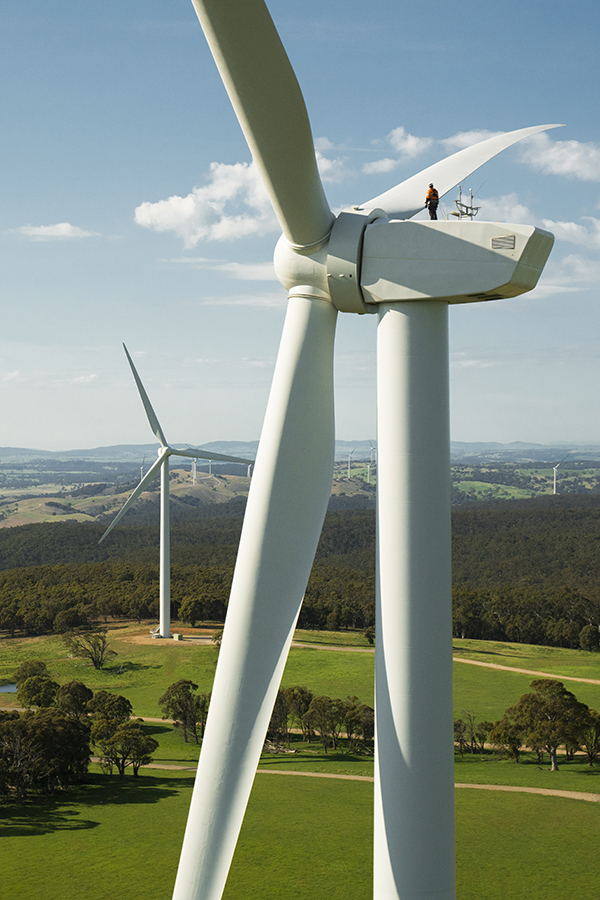Background
The wind farm is located within an agricultural district, with the majority of the site being used largely for grazing and cropping. Extensive surveys and assessments were undertaken prior to construction to assess the potential impact of the wind farm and related infrastructure on the environment.
The siting and design of the project was informed by these assessments to avoid or reduce impact, whilst ground disturbance of the project was further optimised for minimal impact.
Additionally, the project complies with development approval conditions including the implementation of Environmental Management Plans, Native Vegetation Offset Management Plans, Bat and Avifauna Management Plan, Conservation Management Plans etc.
Wind Farm
The closest townships to the wind farm are Beaufort (approximately 4.5 km north of the site) and Skipton (approximately 4 km south of the site).
The primary use of the wind farm site is agriculture with the majority cultivated for grazing and cropping. The site has a long history of agricultural use and accordingly is highly modified with little remnant vegetation remaining on the site.
Several small wetlands (freshwater meadows and shallow freshwater marshes) are scattered within and surrounding the site, in addition to minor drainage lines and creeks which traverse the site, mostly in the west and north. Some areas of pasture also become seasonally inundated or waterlogged. The shallow wetlands are ephemeral and do not hold water every year. Wetlands close to the wind farm boundary or occurring within the site include Lake Goldsmith and Black Lake.
The local geology of the site (and the surrounding area) is quaternary basalt derived from ancient eruption points, such as Stockyard Hill, which is an extinct volcano. Its crater currently holds Black Lake which is an ephemeral semi-saline water body.
The surrounding area includes a number of State parks, namely Langi Ghiran State Park which is located approximately 10 km north-west of the nearest site boundary, and Mount Buangor State Park located approximately 8 km north-west of the nearest site boundary. The landscape also contains Monmot Hill, a volcanic cone and Mount Emu, which is a granite hill.
External Overhead Powerlines
The external overhead powerlines extend approximately 75 km (in total length) between the wind farm and the terminal station (south of Lismore). The closest regional towns to external overhead powerlines are Lismore and Skipton.
The alignment primarily traverses private properties, with the main land use being agriculture, including cropping and livestock. Dwellings in the surrounding area are associated with farming or rural living lots.
The topography of the route is gently undulating with creek valley systems dissecting the area, draining generally southwards. The alignment runs along some creek lines and water courses including Mount Emu Creek and Mundy Gully, and will traverse the following:
Mount Emu Creek
Mundy Gully
Browns Waterholes
Haunted Gully
Oddie Swamp
18 unnamed waterways and 3 unnamed waterbodies
Terminal Station
The terminal station is located at the intersection of Lower Darlington Road and Smiths Road, approximately 5 km to the south of Lismore. The site has a total area of approximately 158 ha, however the development is limited to the southern part of the site.
A short row of Sugar Gum trees has been planted along the northern property boundary. Haunted Gully is located to the north-east of the site within 100 m of the property boundary, Brown’s Waterholes is located approximately 2 km to the east, while Salt Creek is to the south of the site. Additionally, Lake Gnarpurt (a Ramsar Wetland) approximately 5 km to the south east and Lake Tooliorook 4 km to the west of the site.
Two artificial dams are located on the subject site, one along the eastern boundary and the other close to the western boundary. The dam to the east is devoid of native vegetation, and the dam to the west supports a very small modified patch of native vegetation.

